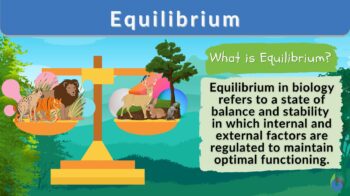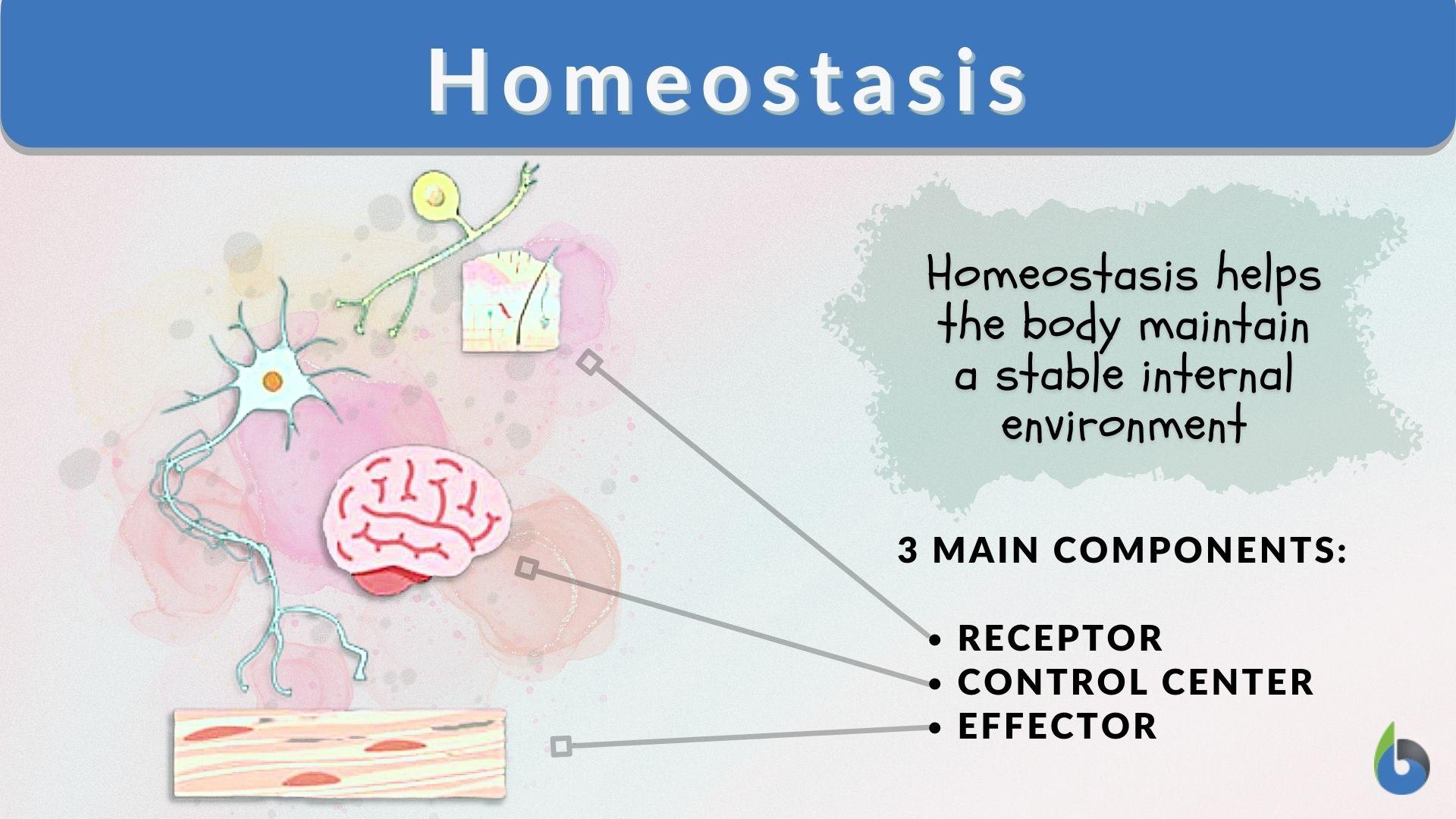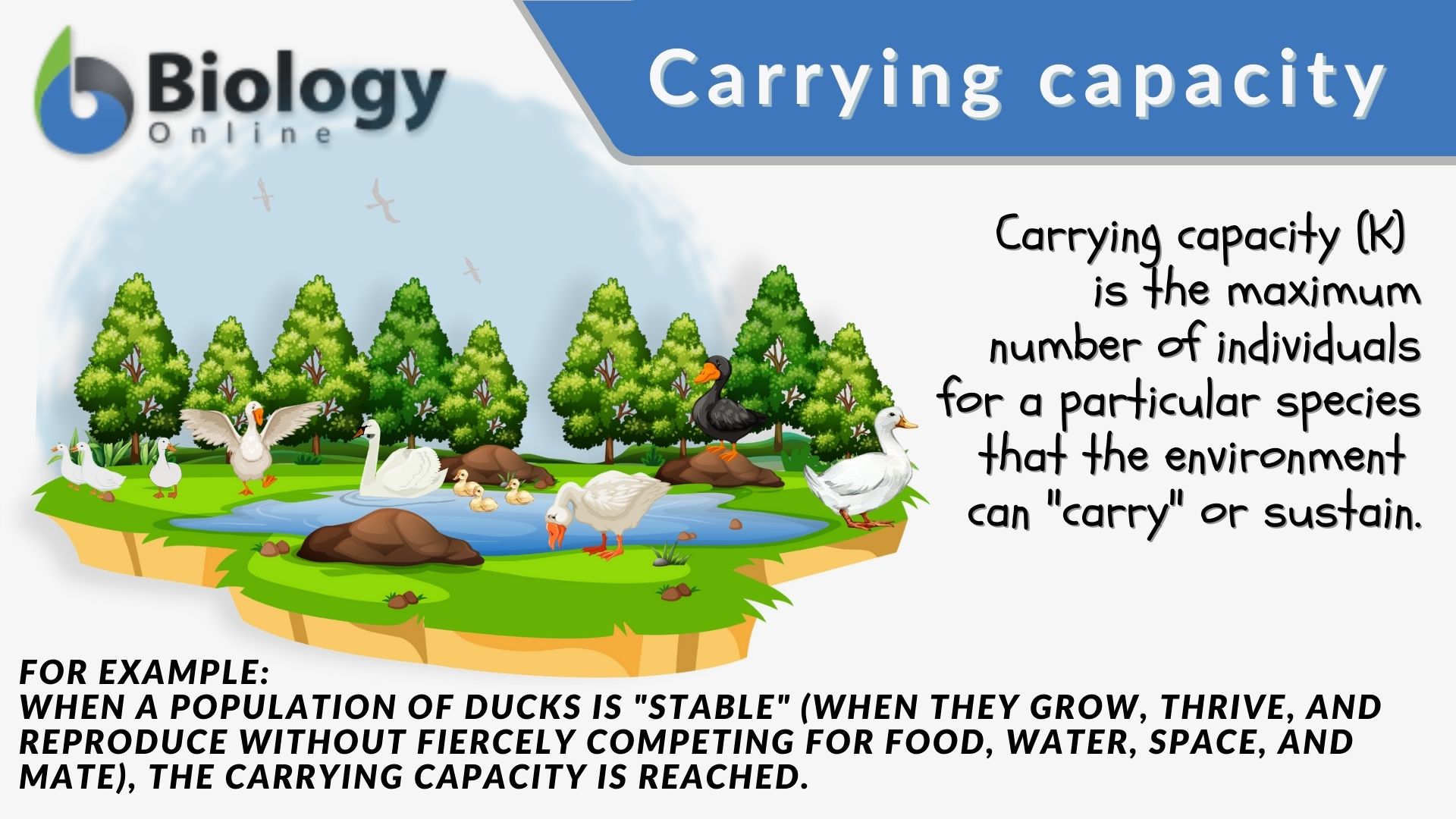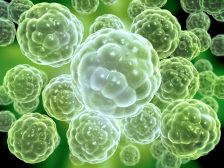
Equilibrium
n., plural: equilibriums or equilibria
[ɛkwɪˈlɪbɹɪəm]
Definition: A condition where competing influences are balanced and no net change
Table of Contents
Equilibrium Definition In Biology
Equilibrium refers to the state of balance and stability. In biology, equilibrium is reached when the internal and external factors are regulated resulting in stability and balance within a biological system. Equilibrium is important as it helps maintain optimal functioning or optimal conditions for biological processes. This allows organisms to function effectively and adapt particularly when dealing with ever-changing environmental conditions. Biological equilibrium often relates to homeostasis, which refers to the tendency or ability of an organism to achieve a stable internal environment. Homeostasis is vital in regulating internal variables such as temperature, pH, nutrient levels, and hormone concentrations within a tolerable range.
When one speaks about equilibrium, one would easily refer to it as a state of balance or stability in general. But how about in other science fields, what does equilibrium mean? Similarly, in nonbiological systems, equilibrium would have been reached when there is a steady or unchanging state. This happens when the opposing factors or competing influences are in a state of balance. Examples include the balance of forces acting on an object, the distribution of heat in a closed system, or the equalization of pressure in a fluid.
In other fields, such as economic, social, chemistry, medical, and psychological domains, what does equilibrium mean? Equilibrium is a state of balance or harmony among different individuals, groups, or variables. For example, economic equilibrium in the economy is achieved when the state of supply is balanced by the demand. Similarly, in psychology, an emotional balance occurs when individuals experience a sense of well-being and harmony in their thoughts and emotions. Overall, whether in biology or non-biological contexts, equilibrium signifies a state of balance, stability, or harmony where various elements, forces, or systems are in relative equilibrium and not subject to significant disturbances or changes.
Let’s read on and find out more about equilibrium and be able to answer common questions like ‘What is equilibrium in biology?’, ‘Why is equilibrium important in biological systems”, “What is an example of equilibrium in biology?”, “What are the types of equilibrium, at least in biology?”
Etymology
The word “equilibrium” has its roots in Latin. It can be traced back to the two Latin words “aequus”, meaning “equal” and “libra”, meaning “balance” or “scale”. The term, thus, has a literal and original meaning of “equal weights on both sides of a scale“. Now, the term maintains to be associated with “balance and stability”. Not only is it a concept in biology, it also has been widely adopted in fields, including physics, chemistry, and economics, describing states of balance and harmony.
Watch this vid about chemical equilibrium as an example of equilibrium in a science field:
Biology definition:
Equilibrium is a state of balance and stability especially necessary in biology for optimal functioning. Whether at the cellular level or within ecosystems, maintaining equilibrium is crucial for the survival and well-being of organisms. In biological processes, an equilibrium state would define balance. An example is the equilibrium at the cellular level specifically when the cell is surrounded by an isotonic fluid. In this example, there is no net movement of water molecules occurring between the cell and the outside fluid. Other biology concepts related to equilibrium are as follows: equilibrioception, genetic equilibrium, homeostatic equilibrium, and punctuated equilibrium
Etymology: From Latin aequilībrium, from equal + lībra (“balance”).
Synonym: balance; stability; harmony
Variant: æquilibrium
Equilibrium and Balance
Can equilibrium and balance be used interchangeably? The two words are often used interchangeably because they convey the concepts of stability in the same way. Both occur in the absence of significant disturbances. Both terms pertain to a state in which opposing forces or factors are in harmony or equal measure, thereby resulting in a state of overall stability. Thus, for the most part, balance can be construed as an equilibrium synonym.
Equilibrium and Uniform motion
Equilibrium and uniform motion are two related but distinct terms, each with different meanings. They are related in the sense that uniform motion results due to a condition that is in equilibrium. Because opposing forces are in balance, there is no net force that will act on a stable system. This allows the system or the object to maintain a constant velocity. With or without equilibrium, an object can remain in uniform motion as long as there are no external forces acting on the object.
Equilibrium vs. Equal or Equality
How about equilibrium and equal or equality? Are they the same? No. These concepts have different contexts and meanings. While both of these terms are associated with “sameness” or “uniformity”, they are used differently.
Equilibrium denotes a state of balance and stability through harmonizing opposing forces or factors. Equality, in turn, denotes the state of being equal (i.e., having the same quantity, size, value, or status).
Equilibrium may depict a dynamic balance where processes or forces counteract each other so as to achieve stability or harmony between or among them, even if they are not of equal size, quantity, magnitude, or value. Equality implicates exact sameness.
For example, in a chemical reaction, the reactants and products may not be equal in quantity, but there can still be an equilibrium reached where the rates of the forward and reverse reactions are balanced. As such, a stable concentration of substances is reached. In this case, equilibrium is reached by a dynamic balance, not necessarily through achieving equal amounts.
Importance of equilibrium in biological systems
How is equilibrium important in biological systems? Equilibrium is vital to the life and existence of organisms. Without ‘balance’, the organism has to deal with how to restore the physiological conditions so as to maintain a functional system, not just within but also the outside environment (ecological interactions). Equilibrium is essential in supporting life and maintaining the health of biological systems.
How is equilibrium achieved in biological systems? At the level of the organism, this is achieved via different biological processes, such as homeostatic mechanisms (feedback loops and membrane transport). Factors like temperature, pH, and nutrient levels have to be regulated to ensure internal balance. At the level of the ecosystem, sustainable balance is promoted by ecological interactions, such as predator-prey relationships and competition among species. Disruptions to equilibrium can have profound consequences on the health and viability of biological systems.
Equilibrium in Biology – Types and Examples
We’ve learned that equilibrium implies balance. Let’s now find out the various terms associated with equilibrium, what they are, plus examples.
Static equilibrium and Dynamic equilibrium
Static equilibrium refers to the state of balance or stability maintained by a system or an object when it is at rest or stationary. Equilibrium in this case is quite easy to imagine. But how does a system or an object that is not static achieve equilibrium?
A system at equilibrium does not always mean there is nothing going on. Referred to as dynamic equilibrium, there is a continuous flow of substances or energy into and out of a system while maintaining the overall state or properties of such a system.
Think of a biochemical reaction at equilibrium. A chemical equilibrium is defined when the reaction proceeds in both the forward and reverse directions at the same rate, such as in a reversible chemical reaction.
Also, imagine water molecules in an isotonic solution. Because the osmotic pressure inside the cell is the same as that of the fluid surrounding the cell, there is no net movement of water molecules between the cell and the surrounding fluid. That doesn’t mean the water molecules do not move across the membrane. They are not static; they are moving toward equilibrium. They move into and out of the cell but at about the same rate. Thus, the result is no net movement — meaning, the level of water molecules moving out is about the same level of water molecules moving into the cell. At this point, a dynamic equilibrium is achieved. The system is not static but rather in a constant state of flux.
Sensing equilibrium, balance, and position
In anatomy, both static equilibrium and dynamic equilibrium refer to the state of balance or stability maintained by the body as it perceives proprioception (or kinesthesia), including equilibrium and balance.
Proprioception refers to the sense or perception of the body’s spatial orientation and movement. Equilibrioception is the sense of balance. It is a physiological sense in humans and animals to prevent them from falling over as they move or stand. It entails the visual system, vestibular system, and proprioception working together to achieve balance.
The ability of the body to sense its position with respect to its external environment is due in part to the sensory input from different receptors, such as those in the muscles, tendons, joints, and the inner ear. The brain integrates information from these sources, including visual input, so as to produce an appropriate response (via the effectors), such as adjusting posture, making coordinated movements, and maintaining balance.
Receptors from the recent examples sense general equilibrium and balance differently:
- Receptors in the muscles are sensitive to muscle stretches and contractions, sending signals to the brain about the muscle’s movement and position.
- Receptors in the joints and tendons (e.g., Golgi tendon organs) are sensitive to muscle tension and force, sending signals to the brain about the muscle tension, movement, and joint position
- Receptors in the inner ear, specifically in the vestibular system, are responsible for detecting and sensing directly both static and dynamic equilibrium. In particular, receptors in the vestibule (utricle and saccule) are related to the sensing of static equilibrium. They are sensitive to changes in linear motion, such as moving forward, backward, or changing elevation. The receptors in the semicircular canals are related to the sensing of dynamic equilibrium. They are responsible for detecting rotational or angular movements of the head.
Homeostatic equilibrium: homeostasis in maintaining equilibrium
Homeostatic equilibrium is the state of equilibrium driven by homeostasis. It entails physiological regulations of the internal environment. But first, let us briefly define homeostasis. Homeostasis is the ability or tendency to adjust to achieve a stable internal environment despite changes in external conditions, allowing them to function optimally. It employs feedback loops in response to a perturbation. These loops involve a series of physiological responses that counteract changes in the internal environment and ensure stability. There are two types of feedback loops: negative feedback, which reverses the initial change, and positive feedback, which amplifies the change.

In the human body, homeostasis plays a vital role in maintaining favorable internal conditions. It is associated with regulating temperature, blood glucose control, and pH balance to name a few.
- Temperature regulation. The human body has ways it employs to achieve a stable internal temperature. When the body temperature rises, the body produces sweat via the sweat glands to cool the body when the sweat evaporates. When the body temperature drops, the body shivers to generate heat.
- Blood glucose control. The body tightly regulates blood glucose levels to ensure a constant supply of energy to cells. It does so by orchestrating the production and release of hormones insulin and glucagon. Insulin promotes the uptake of glucose from the blood into cells, reducing blood glucose levels. Glucagon, on the other hand, stimulates the release of stored glucose into the blood, increasing blood glucose levels.
- pH balance. The body maintains the pH balance, particularly in the blood, to support proper cellular function. Buffer systems, such as bicarbonate and phosphate buffers, help regulate pH by accepting or releasing hydrogen ions (H+) in response to changes in acidity or alkalinity.
Cellular equilibrium
Equilibrium in cells refers to a state in which there is a balance between the movement of molecules into and out of the cell. While molecules are constantly moving, the net movement remains steady, resulting in a stable internal environment. How does a cell maintain equilibrium? One way is through a membrane transport system.
Molecules are transported by these primary mechanisms:
» In passive transport, molecules or ions move along their concentration gradient (downhill). It may be via simple diffusion or through the aid of a membrane protein molecule (facilitated diffusion). This is the mechanism employed in moving oxygen and nutrients.
» Active transport is when molecules or ions move against their concentration gradient (uphill). This is how sodium and potassium ions are transported across the cell membrane.
» Osmosis is a type of passive transport that moves water molecules for osmoregulation.
Ecological equilibrium
Ecological equilibrium refers to a state of balance and stability in an ecosystem. When a system is at equilibrium the populations of organisms and their interactions with the environment are relatively stable over time. It represents a dynamic equilibrium where the rates of birth, death, and other ecological processes are relatively equal.
Remember that in any ecosystem, a hierarchical structure (referred to as trophic levels) occurs depicting the ecological niche and positions of organisms in their environment. In a food chain, for instance, energy flows starting from the producers to the primary, secondary, tertiary consumers, and so on. The flow of energy from one trophic level to another is essential for maintaining equilibrium in ecosystems.
With that said, different ecological relationships (symbioses) are established. For instance, the relationship between predators and prey is referred to as predation. This helps control and keep in balance population sizes and distribution of prey species in a particular habitat. Competition is when organisms vie for limited resources like food and shelter. This interaction achieves ecological equilibrium by resource partitioning. To reduce competition, some competitors are driven into looking for new ecological niches. Mutualistic symbiosis is when organisms of different species mutually benefit from the association, promoting ecological stability and coexistence.
These interactions within ecosystems are crucial for maintaining equilibrium and promoting the sustainability of biological communities and the environment as a whole.
NOTE IT!
“What is Equilibrium Theory in Ecosystems?”
Equilibrium theory is a theory that attempts to explain the patterns and dynamics of ecosystems, populations, and species in relation to their environment. It attempts to explain how biological systems reach and maintain the state of equilibrium.
According to this theory, an ecosystem tends to achieve stability and balance through inherent mechanisms that will control species populations and interactions.
- Carrying capacity: Such that for a particular habitat there exists a carrying capacity — the maximum number of individuals of that species that the environment can “carry” and sustain
- Density-dependent regulation: That in any ecosystem, there will be factors that will regulate population growth, such as biotic interactions (competition, predation, disease, etc.), resource availability, and natural factors (e.g., floods, fires, etc.), that will stabilize populations
- Succession: An ecosystem will undergo a progressive succession of communities over time and may be referred to as primary, secondary, or cyclic successions

Nutritive equilibrium
Nutritive equilibrium is the state of balance between intake and excretion of nutritive material, thus, there is no increase or loss in weight. The amount of nutrients obtained from the diet matches the energy expended by the body. This promotes a stable body composition and overall health. In order to achieve and maintain nutritive equilibrium, a balanced diet plays a crucial role.
Genetic equilibrium
Genetic equilibrium (Hardy-Weinberg equilibrium) is a condition where a gene pool is not changing in frequency because the evolutionary forces acting upon the allele are equal, thus, resulting in a population not evolving even after several generations. This concept assumes that in a scenario where genetic equilibrium is reached, possible causal factors are as follows: large population size, lack of mutations, absence of migrations, no specific mating preferences (random mating), and all genotypes having equal fitness.
Punctuated equilibrium
Punctuated equilibrium is a theory describing an evolutionary change happening rapidly and in brief geological events in between long periods of stasis (or equilibrium). This is in contrast to the previous notion of gradualism, which believes that evolutionary change occurs gradually at a slow yet constant rate over long periods of time. Punctuated equilibrium attempts to explain that evolutionary changes do not always occur gradually or uniformly. Rather, species evolve by intermittent bursts of significant change (punctuations) after long periods of stability, especially when stability is disrupted by major disturbances, such as genetic drift, shifts in habitats, genetic mutations, and natural selection.
Disruption Of Equilibrium
Equilibrium may be disrupted by a shift or a change that’s significant enough to cause a disturbance.
- At the level of the organism, factors that may lead to biological disturbance include allergens, pathogens, mutagens, and environmental conditions (e.g., temperature and pH). If the body fails to control, compensate, or remedy it over time, the condition may lead to physiological stress, dysfunction, disorders, diseases, and/or impaired organs/systems. Maintaining homeostasis is crucial for the proper functioning and survival of individual organisms. If disrupted, the internal balance and stability are compromised, thus, putting the life of the organism at risk.
- At the level of the ecosystem, biotic and abiotic factors may generate change that is substantial enough to destabilize the ecosystem. Examples of such factors are climate change, pollution, habitat destruction, and introduction of invasive species. These changes can alter resource availability, disrupt ecological interactions, and lead to population declines or extinctions.
The consequences of these disruptions to the natural equilibrium can vary depending on the severity and duration of the disturbance.
NOTE IT!
Have you heard of brumation?
In some organisms such as certain species of reptiles and amphibians, they enter a state of suspended animation called “brumation” during winter months. Brumation is similar to hibernation in mammals, but instead of a deep sleep, these animals experience a slowed metabolic rate and reduced activity.
During brumation, their body systems, including respiration, heart rate, and digestion, slow down to conserve energy and maintain equilibrium in response to cold temperatures and limited food availability.
This fascinating adaptation allows these organisms to survive and endure harsh environmental conditions while minimizing their energy expenditure.
Watch this vid about brumation in reptiles for conserving energy and maintaining equilibrium during winter:
Take the Equilibrium – Biology Quiz!
Further Reading
- Hardy-Weinberg equilibrium
- Genetic equilibrium
- Punctuated equilibrium
- Mechanical equilibrium
- Equilibrium constant
- Secular equilibrium
- Homeostatic equilibrium
- Diffusion equilibrium
References
Equilibrium definition:
- Hickman, C. P., Roberts, L. S., Larson, A., Ober, W. C., & Garrison, C. W. (2011). Integrated Principles of Zoology. McGraw-Hill Education.
Homeostasis:
- Guyton, A. C., & Hall, J. E. (2020). Textbook of Medical Physiology. Elsevier.
Cellular equilibrium:
- Alberts, B., Johnson, A., Lewis, J., Raff, M., Roberts, K., & Walter, P. (2014). Molecular Biology of the Cell. Garland Science.
- Nelson, D. L., Cox, M. M., Lehninger, A. L., & Cox, M. M. (2017). Lehninger Principles of Biochemistry. W.H. Freeman.
- Lodish, H., Berk, A., Zipursky, S. L., Matsudaira, P., Baltimore, D., & Darnell, J. (2012). Molecular Cell Biology. W.H. Freeman.
Equilibrium in ecosystems:
- Odum, E. P., & Barrett, G. W. (2004). Fundamentals of ecology. Cengage Learning.
- Pimm, S. L. (1991). The Balance of Nature?: Ecological Issues in the Conservation of Species and Communities. University of Chicago Press.
©BiologyOnline.com. Content provided and moderated by Biology Online Editors.







